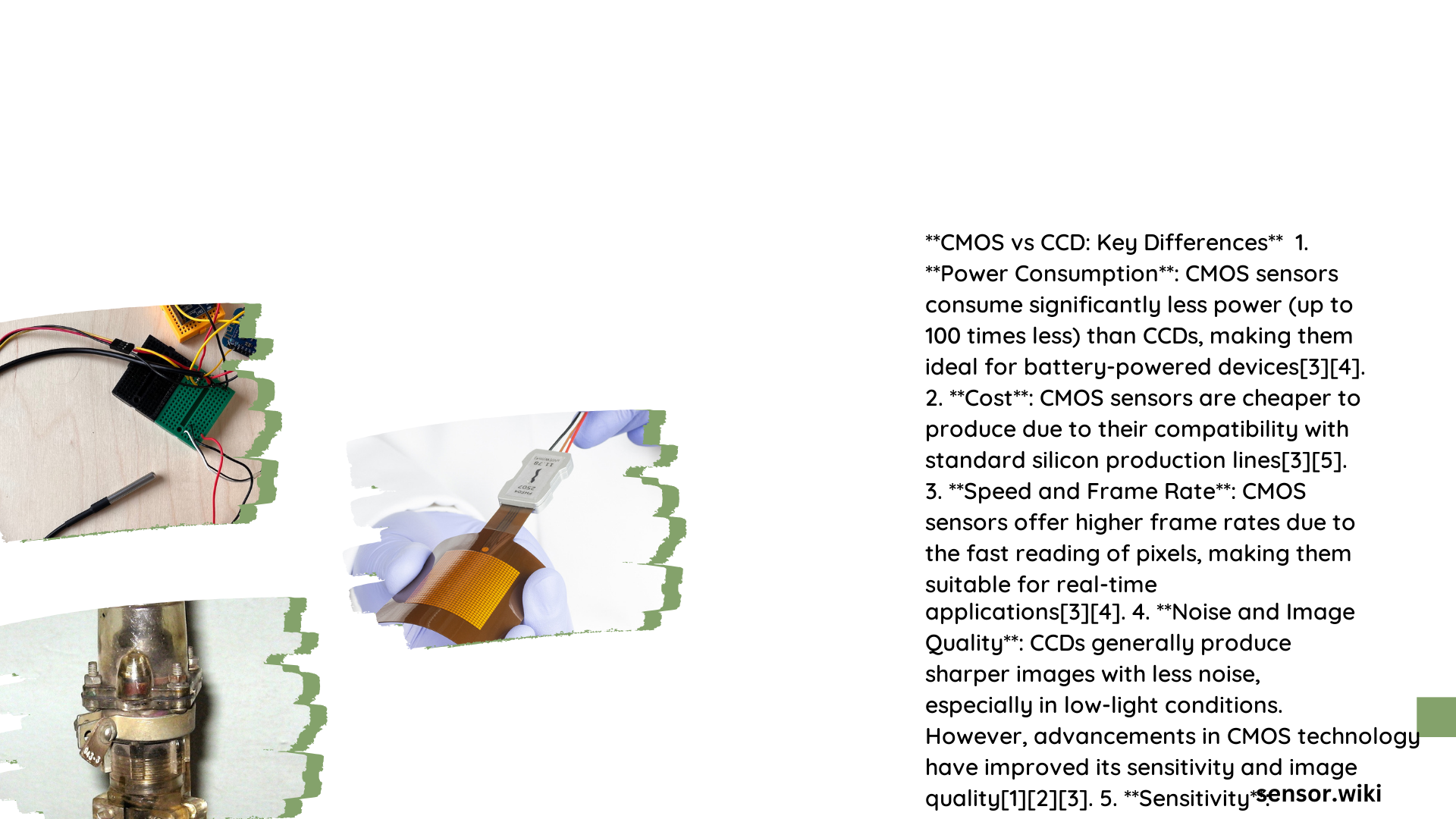In the rapidly evolving world of digital imaging, the debate between CMOS and CCD sensors continues to intrigue photographers, engineers, and technology enthusiasts. Both sensor technologies offer unique advantages and limitations, making the choice between them critical for specific imaging applications. Understanding their fundamental differences in performance, power consumption, image quality, and technological capabilities is essential for making an informed decision about which sensor technology best suits your requirements.
What Are the Core Differences Between CMOS and CCD Sensors?
How Do CMOS and CCD Sensors Fundamentally Operate?
CMOS (Complementary Metal-Oxide-Semiconductor) and CCD (Charge-Coupled Device) sensors are two primary technologies used for converting light into electronic signals. While they share the fundamental goal of image capture, their operational mechanisms differ significantly:
CCD Sensor Characteristics
- Transfers electrical charge sequentially through the sensor
- Uses a single analog-to-digital converter
- Produces high-quality, low-noise images
- Historically used in professional and scientific imaging
CMOS Sensor Characteristics
- Processes signals directly at pixel level
- Integrates multiple functions on a single chip
- Offers lower power consumption
- Increasingly dominant in consumer electronics
What Performance Metrics Distinguish CMOS from CCD?
| Performance Metric | CCD Sensors | CMOS Sensors |
|---|---|---|
| Power Consumption | High (100-500 mW) | Low (10-50 mW) |
| Noise Levels | Lower | Moderate |
| Manufacturing Cost | Expensive | Cost-effective |
| Integration Capability | Limited | High |
Why Are CMOS Sensors Gaining Technological Superiority?

Can CMOS Sensors Overcome Traditional CCD Limitations?
Modern CMOS sensor technology has dramatically improved, addressing previous shortcomings:
- Noise Reduction
- Advanced pixel designs
- Improved signal processing algorithms
-
Microlens array implementations
-
Dynamic Range Enhancement
- Higher saturation capacity
- Better light sensitivity
-
Improved pixel architecture
-
Power Efficiency
- Significantly lower energy consumption
- Better heat management
- Ideal for portable devices
What Are the Key Advantages of CMOS Technology?
CMOS sensors offer several compelling advantages:
- Compact Design: Integrated circuits enable smaller form factors
- Lower Manufacturing Costs: Standard silicon production processes
- Higher Frame Rates: Parallel signal processing
- Versatile Applications: Smartphones, automotive, medical imaging
When Should You Choose CCD Over CMOS?
Are There Specific Scenarios Favoring CCD Sensors?
While CMOS dominates most markets, CCD remains superior in:
- Astronomical imaging
- Scientific research
- High-precision color reproduction
- Low-light professional photography
Technical Considerations for Sensor Selection
How Do Technological Advancements Impact Sensor Choice?
Emerging technologies continue to blur the lines between CMOS and CCD:
- Backside-illuminated CMOS sensors
- Quantum efficiency improvements
- Advanced noise reduction techniques
- Machine learning-enhanced image processing
Practical Recommendations
Which Sensor Should You Select?
Recommended Selection Criteria:
– Consumer Electronics: CMOS
– Professional Photography: Evaluate specific requirements
– Scientific Research: Depends on specific application
– Mobile Devices: CMOS
– High-End Video Production: Situational evaluation
Final Technical Assessment
The ongoing evolution of sensor technologies suggests that CMOS sensors are progressively becoming the preferred choice across most imaging applications. Their continuous technological improvements, lower costs, and superior integration capabilities make them increasingly competitive against traditional CCD technologies.
References:
– Teledyne Vision Solutions
– Basler AG Sensor Comparison
– Camera Source Technology Review
